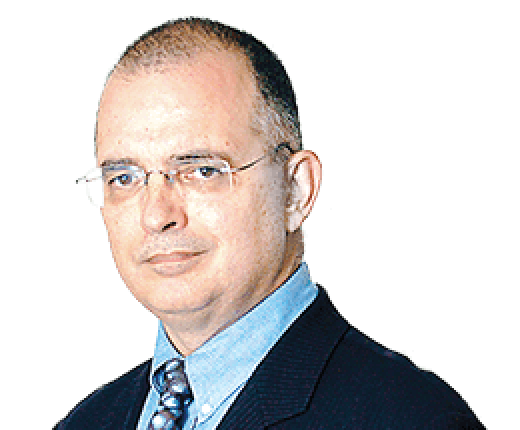Last Friday, when the leaders of the legal profession assembled in Sydney’s Banco Court, they were marking one of the great turning points in the struggle for power in early Australia.
Officially, they were there to mark the bicentenary of the NSW Supreme Court and the appointment of Francis Forbes as its first Chief Justice.
But 1824 is much more than this. That year marked the beginning of the end for unchecked executive power and the transformation of early Australia based on the rule of law and press freedom.
These achievements are entirely attributable to the fortitude of Forbes and his insistence that these ideas should prevail, even in a penal colony on what was then viewed as the far side of the world.
Forbes enforced the principle that executive power was subject to the law. And the requirements of the law are determined, then as now, by an independent judiciary, not government officials.
This is not some historical curiosity. It is just as much a live issue today as it was two centuries ago.
We saw this principle in action on May 13 when Justice Geoffrey Kennett of the Federal Court struck down an attempt by a federal bureaucrat who wanted to regulate what Elon Musk publishes in other countries.
Four days later, at last Friday’s ceremonial sitting of the Supreme Court, Chief Justice Andrew Bell was explicit in linking the work of the judiciary to the defence of liberty.
“A strong, independent and respected judiciary is also a bulwark of liberty and the public’s constant guardian against excesses of executive power,” Bell told the court.
“That dimension of this court’s role was early to the fore, with the strong and independent Sir Francis Forbes, our first Chief Justice, twice striking down laws of Governor Darling designed to restrict the freedom of the press.”
This struggle should be kept in mind should the federal government make another attempt to outlaw publication online of information deemed “harmful” by government officials.
Academics Gabriels Moens and Augusto Zimmermann wrote in Spectator Australia last month that harm “is a flexible and indeterminate concept that potentially encompasses any type of speech which the relevant bureaucratic agencies deem to be harmful”.
While the government’s plan was ostensibly aimed at “misinformation and disinformation”, Moens and Zimmermann wrote that it would inevitably stymie discussion of controversial topics, especially if they involved criticism of government policy and actions.
The similarities between this plan and the struggles of 1824 are all too obvious. But will the outcome be the same?
When Forbes arrived in Sydney he was no novice. He had previously been Chief Justice of Newfoundland and he brought with him a library of 500 law books.
The catalyst for the struggle over press freedom was a troublemaking newspaper that happened to be called The Australian.
The original newspaper of that name, which is unrelated to its modern namesake, first appeared on October 14, 1824, five months after the establishment of the Supreme Court had been proclaimed in Sydney.
The fortitude of Forbes in challenging authoritarian rule was matched by that of the publisher of the original Australian, William Charles Wentworth, barrister, adventurer, explorer, statesman and son of a convict.
While Forbes arrived in Sydney with law books, Wentworth returned from legal studies in England with a printing press, an experienced newspaper man and a plan to campaign for civil rights.
That newspaper man was Robert Wardell, a barrister and former editor and proprietor of The Statesman. Wentworth and Wardell effectively founded the private Bar in NSW.
The first edition of their newspaper made this promise: “ . . . we shall pursue our labours without either a sycophantic approval of, or a systematic opposition to, acts of authority, merely because they emanate from government”.
They campaigned in print and in court against “exclusivists” – free settlers, officials and military officers who sought to limit the civil rights of former convicts who were growing in wealth and number.
In his 1991 book, “The Rule of Law in a Penal Colony,” David Neal recounts how Wentworth and Wardell campaigned for trial by jury and the right of “emancipists” – former convicts – to serve on juries.
“They used their newspaper, The Australian, to amplify their court room oratory,” Neal writes.
“By casting the great political struggles of the day in legal terms, they gained access to the forum of the courts and to the fund of ideas, arguments and rhetoric encapsulated in the rule of law.
“These battles over the shape of power in the colony marked significant points in its movement towards the status of a free society,” Neal writes.
The ideas promoted by Wentworth and Wardell infuriated Governor Ralph Darling, a career military man who tried to impose a tax and licensing system to regulate the content of newspapers.
Forbes, however, considered this repugnant to the law of England. And under the system of checks and balances that was in force from 1824, that meant Darling’s changes could not proceed.
London eventually backed the Chief Justice proving that in this country the rule of law led to a free society, and not the other way around.
This affair is outlined in two books marking the Supreme Court’s bicentenary. “Constant Guardian – Changing Times” is a comprehensive history of the court that has been edited by Keith Mason and Larissa Reid.
“Checks and Balances – Press Freedom and an Independent Judiciary” has been produced for schools by the Rule of Law Education Centre and focuses on the clash between Forbes and Darling.
Chris Merritt is vice-president of the Rule of Law Institute of Australia and the Rule of Law Education Centre



